The Google Nexus 9 Review
by Joshua Ho & Ryan Smith on February 4, 2015 8:00 AM EST- Posted in
- Tablets
- HTC
- Project Denver
- Android
- Mobile
- NVIDIA
- Nexus 9
- Lollipop
- Android 5.0
Display
For those that are uninitiated to the world of displays, a display seems relatively simple. After all, it just needs to have high resolution, pretty colors, high brightness, and high contrast. However, there’s a great deal of complexity to this issue. Even excluding the actual structure of a display, the characteristics of a display can strongly affect perception. Poor display calibration, low brightness, high reflectance, and low contrast can all affect the experience. In addition, something as simple as subpixel arrangement and the thin-film transistor design can have significant impacts on viewing angles and battery life.
In order to test these things, we use SpectraCal’s CalMAN 5 Ultimate and X-Rite’s i1pro2 spectrophotometer to ensure accuracy in our testing, in conjunction with subjective testing to get a good idea of overall display performance. As always, we target sRGB gamut and 2.2 gamma as these are the industry standard. While there are many arguments for larger gamuts and different gamma curves, the goal of our display calibration testing is to make sure that a display will be reasonably accurate in its reproduction of content as an artist intended. Without this calibration, videos, photos, and other content can appear "off".
While we still don’t have an accurate reflectance test, I spent a great deal of time wondering why the display on the Nexus 9 seemed to have more distracting glare than most. This was strange to me as the display was obviously laminated with no perceivable viewing angle degradation that comes with non-laminated displays. It seems that whatever material HTC has used to laminate the display isn’t quite ideal in this case, as at some point in the display stack there’s an obvious secondary reflection. This is an issue relating to a lower index of refraction, so it’s likely that some other characteristic was valued over reflectance.
Other than this, the only other immediately noticeable flaw is the display’s backlight bleed. To me, it’s quite obvious that the display gets lighter at the edges much like what I’ve seen on the Nexus 5. It seems that this is related to the backlight configuration, although given the high brightness of the panel I'm not sure that this can be avoided.
Before we get into the objective testing, I also wanted to mention that this display has “dual-domain pixels” similar to the iPad Air 2 and iPhone 6. The level of angling seems to be much more significant though, which seems to make the purple blacks much more obvious, but outside of this shift in black point it’s almost impossible to see shifts in color with changes in viewing angle. The microscope photo combined with some casual examination under sunlight suggests that the digitizer has been integrated into the display for improved clarity. The resolution is also quite high for a tablet, and while I can obviously pick out aliasing when closely examining the display, at a normal viewing distance I don’t really see any of these problems.
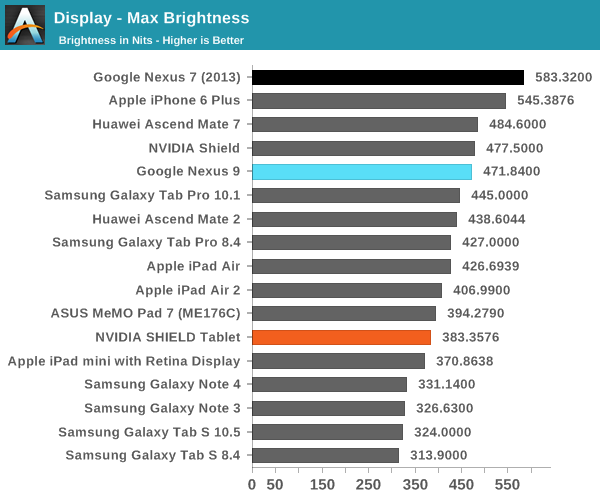

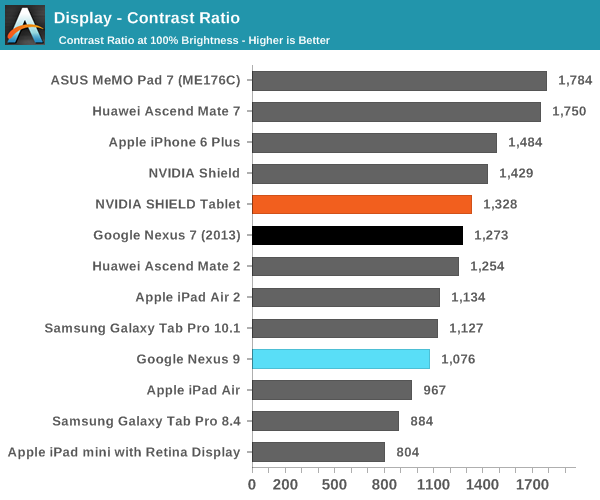
The brightness of the Nexus 9's display ends up higher than what we see with the iPad Air 2. Contrast is approximately equal to what we see in the iPad Air 2, which is good but definitely not the perfect inky blacks that one might be used to from AMOLED.

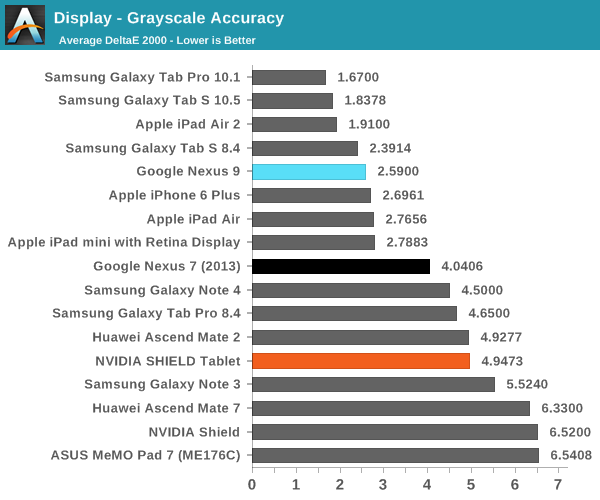
The next aspect of our display test suite is the grayscale test, which looks at the color balance and brightness of various shades of grayscale from black to white. Here, the Nexus 9 really does a great job across the board. If I were to nitpick, there is a bit of extra blue in the display but it’s really nothing worth talking about. Google does seem to consistently favor a lower contrast look when the gamma curve is dead on the mark, but on average it’s close enough to a power 2.2 curve that it doesn’t make a difference when viewing the display.
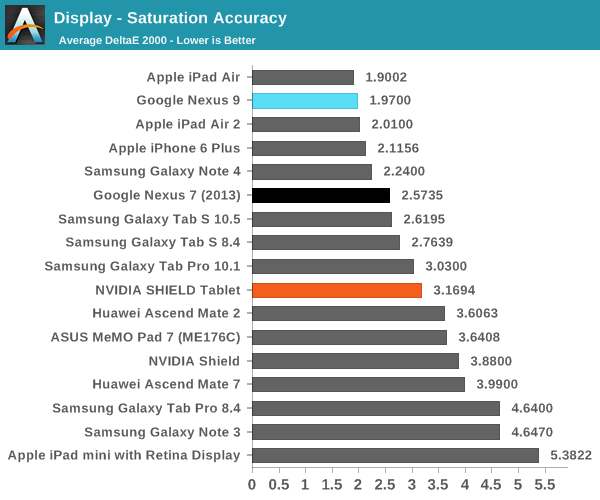
While grayscale is important, colors are really the hardest part to get right in a display. Here, the Nexus 9 does an amazing job in our saturation test. I really don’t have anything else to say here as pretty much everything is on the mark. At this point, it’s pretty clear that most Nexus devices have a strong focus on display quality, and the Nexus 9 is no exception.
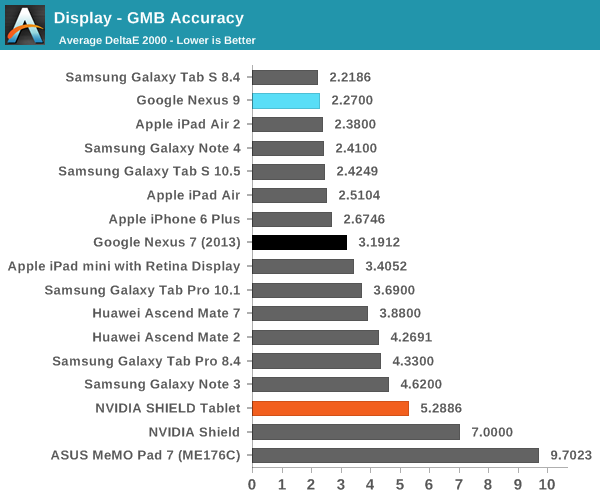
Finally, the Gretag MacBeth test shows that the Nexus 9 is quite accurate with color even outside of the basic primary and secondary colors. There shouldn’t be any issues with viewing content that has high requirements for color accuracy. Overall, the Nexus 9 display is great with only two real issues of note, namely the reflectance issue and the backlight bleed. While neither are deal-breakers, fixing these issues would make this display fall under a short list of the best mobile displays I’ve seen all year. For now, it sits just shy of that list. I definitely have to applaud Google in this case as they haven’t fallen into the trap of wider gamuts, bluer white points, dynamic contrast, and other “features” for the sake of showroom appeal.


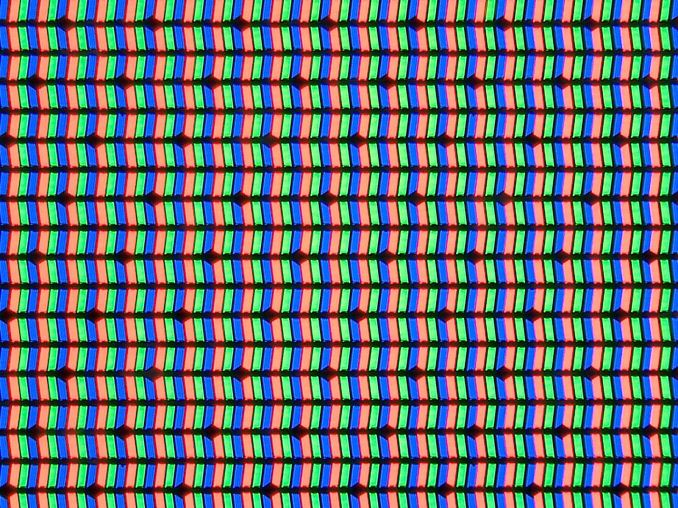

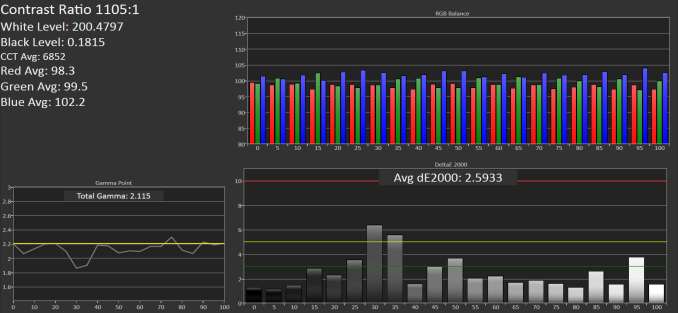
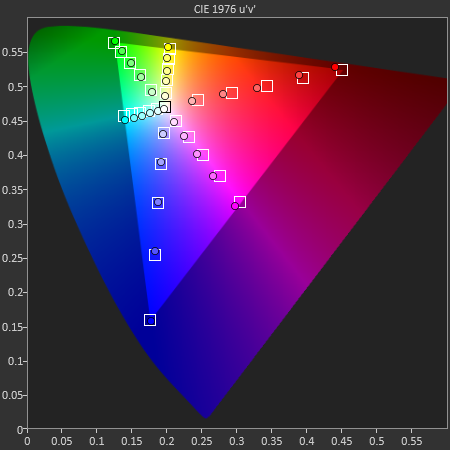
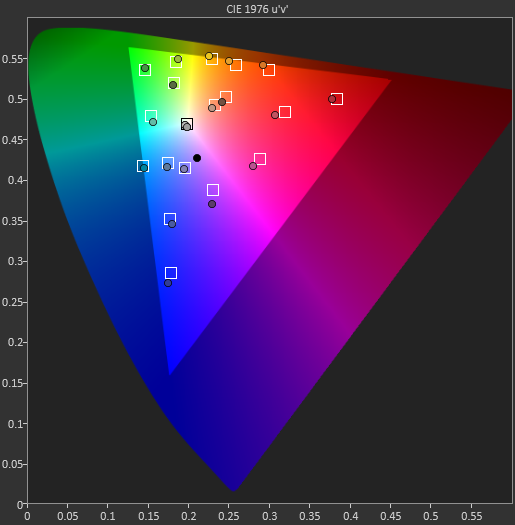








169 Comments
View All Comments
Mondozai - Wednesday, February 4, 2015 - link
No offence but how relevant is this review so many months after release?You guys dropped the ball on this one. We're also still waiting for the GTX 960 review.
What has happened to Anandtech...
LocutusEstBorg - Wednesday, February 4, 2015 - link
There's no Anand.nathanddrews - Wednesday, February 4, 2015 - link
That's the only change I've noticed.Morawka - Wednesday, February 4, 2015 - link
and no Brian Klugnathanddrews - Wednesday, February 4, 2015 - link
Yeah, but that was earlier.Ryan Smith - Wednesday, February 4, 2015 - link
"What has happened to Anandtech..."Nothing has happened to AnandTech. We're still here and working away at new articles.=)
However this article fell victim to bad timing. The short story is that I was out sick for almost 2 weeks in December, which meant this got backed up into the mess that is the holidays and CES.
As for how relevant it is, it is still Google's premiere large format tablet and the only shipping Denver device, both of which make it a very interesting product.
Jon Tseng - Wednesday, February 4, 2015 - link
It's fine to be late (although maybe not as late as the Razer Blade 2014 review!). Better to have late, differentiated content than early, commoditised content. Whether the review like's the colour of a tablet's trim is of limited interest for me; the details of Denver code-morphing are.Actually my worry is that under new ownership Anandtech might be pushed to go down the publish early/get click views route vs. the publish late/actually deliver something useful. Hopefully it won't come to this, but this is what historically happens... :-(
Operandi - Thursday, February 5, 2015 - link
Being there on day one is not a huge deal but its certainly not ok be as late as this review is or the still MIA 960 review. If you are going to be late you better be brining something new to the table to justify not being there in the same time frame as your peers. This is so laughably late its almost embarrassing to release it at all at this point.Tech journalism like most other markets is competitive and there are lots of other very competent publications out there competing for the same readers. Personally I've already gotten all the Nexus 9 information elsewhere so this review is of no value to me whatsoever. The same goes for the 960 review when/if that review ever shows up.
akdj - Wednesday, February 11, 2015 - link
Not sure where you've seen such an extensive write up and dissection of Denver, but I certainky haven't. Nor were the N9/6 widely available until the holidays were over. Like a month agoFor every 10,000,000 iPads produced, HTC is probably knocking out 10,000
Excellent review, write up and information about the 'other 64bit' option.
Taneli - Wednesday, February 4, 2015 - link
Timing is secondary for a deeply technical article like this here. You guys did exactly the right thing, reporting when the device was announced and waited for the review to be done before publishing. Also, having people out sick in a small team is something you really can't do that much about. I hope you're well now.The article itself was superb. Thanks for the read and keep up the good work.